 W
WAestheticism was an art movement, both practical and theoretical, of the late 19th century supporting an emphasis on aesthetic value and effects— in preference to the socio-political themes and positions— of literature, fine art, music and other arts. This meant that the art of the movement was produced with a view toward being beautiful first and foremost, rather than serving a moral, allegorical, doctrinal or other such purpose — "art for art's sake". It was particularly prominent in England during the late 19th century, supported by notable writers such as Walter Pater and Oscar Wilde, having started in a small way in the 1860s in the studios and houses of a radical group of artists and designers, including William Morris and Dante Gabriel Rossetti, reformers who explored new ways of living in defiance of the design standards of the age as revealed in the 1851 Great Exhibition at Hyde Park, London. Flourishing in the 1870s and 1880s, critic Walter Hamilton was the first writer to name the movement, publishing The Aesthetic Movement in England in 1882.
 W
WThe Apollonian and the Dionysian are philosophical and literary concepts represented by a duality between the figures of Apollo and Dionysus from Greek mythology. Its popularization is widely attributed to the work The Birth of Tragedy by Friedrich Nietzsche, though the terms had already been in use prior to this, such as in the writings of poet Friedrich Hölderlin, historian Johann Joachim Winckelmann, and others. The word Dionysian occurs as early as 1608 in Edward Topsell’s zoological treatise, The History of Serpents. The concept has since been widely invoked and discussed within Western philosophy and literature.
 W
WAn art manifesto is a public declaration of the intentions, motives, or views of an artist or artistic movement. Manifestos are a standard feature of the various movements in the modernist avant-garde and are still written today. Art manifestos are sometimes in their rhetoric intended for shock value, to achieve a revolutionary effect. They often address wider issues, such as the political system. Typical themes are the need for revolution, freedom and the implied or overtly stated superiority of the writers over the status quo. The manifesto gives a means of expressing, publicising and recording ideas for the artist or art group—even if only one or two people write the words, it is mostly still attributed to the group name.
 W
WThe art world comprises everyone involved in producing, commissioning, presenting, preserving, promoting, chronicling, criticizing, buying and selling fine art. It is recognized that there are many art worlds, defined either by location or alternative definitions of fine art. Some may use the singular art world to refer only to the elite level of globalized fine art. The art world(s) are continually changing in response both to the creativity of those that create art and in response to social change.
 W
WThe avant-garde are people or works that are experimental, radical, or unorthodox with respect to art, culture, or society. It is frequently characterized by aesthetic innovation and initial unacceptability.
 W
WBeauty is commonly described as a feature of objects that makes these objects pleasurable to perceive. Such objects include landscapes, sunsets, humans and works of art. Beauty, together with art and taste, is the main subject of aesthetics, one of the major branches of philosophy. As a positive aesthetic value, it is contrasted with ugliness as its negative counterpart. It is often listed as one of the three fundamental concepts of human understanding besides truth and goodness.
 W
WIn conventional usage, boredom is an emotional and occasionally psychological state experienced when an individual is left without anything in particular to do, is not interested in their surroundings, or feels that a day or period is dull or tedious. It is also understood by scholars as a modern phenomenon which has a cultural dimension. "There is no universally accepted definition of boredom. But whatever it is, researchers argue, it is not simply another name for depression or apathy. It seems to be a specific mental state that people find unpleasant—a lack of stimulation that leaves them craving relief, with a host of behavioural, medical and social consequences." According to BBC News, boredom "...can be a dangerous and disruptive state of mind that damages your health"; yet research "...suggest[s] that without boredom we couldn't achieve our creative feats."
 W
WCreativity is a phenomenon whereby something somehow new and somehow valuable is formed. The created item may be intangible or a physical object.
 W
WCuteness is a subjective term describing a type of attractiveness commonly associated with youth and appearance, as well as a scientific concept and analytical model in ethology, first introduced by Konrad Lorenz. Lorenz proposed the concept of baby schema (Kindchenschema), a set of facial and body features, that make a creature appear "cute" and activate ("release") in others the motivation to care for it. Cuteness may be ascribed to people as well as things that are regarded as attractive or charming.
 W
WDesert X is a site-specific, contemporary art exhibition that is held in the Coachella Valley in Southern California. The inaugural Desert X was held from February 25 to April 30, 2017; Desert X 2019, February 9 to April 21.
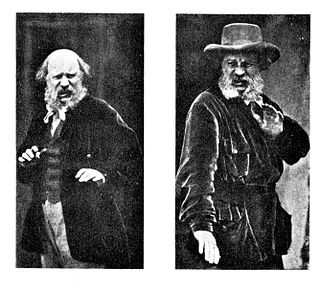 W
WDisgust is an emotional response of rejection or revulsion to something potentially contagious or something considered offensive, distasteful, or unpleasant. In The Expression of the Emotions in Man and Animals, Charles Darwin wrote that disgust is a sensation that refers to something revolting. Disgust is experienced primarily in relation to the sense of taste, and secondarily to anything which causes a similar feeling by sense of smell, touch, or vision. Musically sensitive people may even be disgusted by the cacophony of inharmonious sounds. Research continually has proven a relationship between disgust and anxiety disorders such as arachnophobia, blood-injection-injury type phobias, and contamination fear related obsessive–compulsive disorder.
 W
WEcstasy is a subjective experience of total involvement of the subject, with an object of their awareness. In classical Greek literature it refers to removal of the mind or body "from its normal place of function."
 W
WElegance is beauty that shows unusual effectiveness and simplicity.
 W
WIn Zen, ensō is a circle that is hand-drawn in one or two uninhibited brushstrokes to express a moment when the mind is free to let the body create.
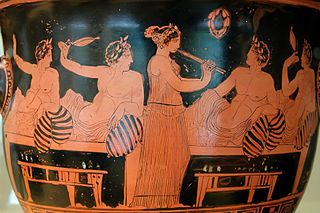 W
WEntertainment is a form of activity that holds the attention and interest of an audience or gives pleasure and delight. It can be an idea or a task, but is more likely to be one of the activities or events that have developed over thousands of years specifically for the purpose of keeping an audience's attention.
 W
WEphemerality is the concept of things being transitory, existing only briefly. Typically the term ephemeral is used to describe objects found in nature, although it can describe a wide range of things, including human artifacts intentionally made to last for only a temporary period, in order to increase their perceived aesthetic value. With respect to unique performances, for example, it has been noted that "[e]phemerality is a quality caused by the ebb and flow of the crowd's concentration on the performance and a reflection of the nostalgic character of specific performances". Because different people may value the passage of time differently, "the concept of ephemerality is a relative one".
 W
WEroticism is a quality that causes sexual feelings, as well as a philosophical contemplation concerning the aesthetics of sexual desire, sensuality, and romantic love. That quality may be found in any form of artwork, including painting, sculpture, photography, drama, film, music, or literature. It may also be found in advertising. The term may also refer to a state of sexual arousal or anticipation of such – an insistent sexual impulse, desire, or pattern of thoughts.
 W
WFashion is a form of self expression, at a particular period and place and in a specific context, of clothing, footwear, lifestyle, accessories, makeup, hairstyle, and body posture. In its everyday use, the term implies a look defined by the fashion industry as that which is trending. What is called fashion is thus that which is made available and popular by fashion system.
 W
WIn critical theory, sociology, and psychoanalysis, the gaze, in the philosophical and figurative sense, is an individual's awareness and perception of other individuals, other groups, or oneself. The concept and the social applications of the gaze have been defined and explained by existentialist and phenomenologist philosophers. Jean-Paul Sartre described the gaze in Being and Nothingness (1943). Michel Foucault, in Discipline and Punish: The Birth of the Prison (1975), developed the concept of the gaze to illustrate the dynamics of socio-political power relations and the social dynamics of society's mechanisms of discipline. Jacques Derrida, in The Animal that Therefore I Am (1997), elaborated upon the inter-species relations that exist among human beings and other animals, which are established by way of the gaze.
 W
WIn music, harmony is the process by which the composition of individual sounds, or superpositions of sounds, is analysed by hearing. Usually, this means simultaneously occurring frequencies, pitches, or chords.
 W
WImpermanence, also known as the philosophical problem of change, is a philosophical concept addressed in a variety of religions and philosophies. In Eastern philosophy it is best known for its role in the Buddhist three marks of existence. It is also an element of Hinduism. In Western philosophy it is most famously known through its first appearance in Greek philosophy in the writings of Heraclitus and in his doctrine of panta rhei. In Western philosophy the concept is also called becoming.
 W
WIn the study of the human mind, intellect refers to and identifies the ability of the mind to reach correct conclusions about what is true and what is false, and about how to solve problems. The term intellect derives from the Ancient Greek philosophy term nous, which translates to the Latin intellectus and into the French and English languages as intelligence. Discussion of the intellect is in two areas of knowledge, wherein the terms intellect and intelligence are related terms.In philosophy, especially in classical and medieval philosophy the intellect (nous) is an important subject connected to the question: How do humans know things? Especially during late antiquity and the Middle Ages, the intellect was proposed as a concept that could reconcile philosophical and scientific understandings of Nature, with monotheistic religious understandings, by making the intellect a link between each human soul, and the divine intellect of the cosmos. During the Latin Middle Ages the distinction developed whereby the term intelligence referred to the incorporeal beings that governed the celestial sphere; see: passive intellect and active intellect. In modern psychology and in neuroscience, the terms intelligence and intellect describe mental abilities that allow people to understand; the distinction is that intellect relates to facts, whereas intelligence relates to feelings.
 W
WThe is–ought problem, as articulated by the Scottish philosopher and historian David Hume, arises when one makes claims about what ought to be that are based solely on statements about what is. Hume found that there seems to be a significant difference between positive statements and prescriptive or normative statements, and that it is not obvious how one can coherently move from descriptive statements to prescriptive ones. Hume's law or Hume's guillotine is the thesis that, if a reasoner only has access to non-moral and non-evaluative factual premises, the reasoner cannot logically infer the truth of moral statements.
 W
WJapanese aesthetics comprise a set of ancient ideals that include wabi, sabi, and yūgen. These ideals, and others, underpin much of Japanese cultural and aesthetic norms on what is considered tasteful or beautiful. Thus, while seen as a philosophy in Western societies, the concept of aesthetics in Japan is seen as an integral part of daily life. Japanese aesthetics now encompass a variety of ideals; some of these are traditional while others are modern and sometimes influenced by other cultures.
 W
WKawaii (Japanese: かわいい or 可愛い, IPA: [kaɰaiꜜi]; 'lovely', 'loveable', 'cute', or 'adorable') is the culture of cuteness in Japan. It can refer to items, humans and non-humans that are charming, vulnerable, shy, and childlike. Examples include cute handwriting, certain genres of manga, and characters including Hello Kitty and Pikachu.
 W
WKitsch is art or other objects that, generally speaking, appeal to popular rather than "high art" tastes. Such objects are sometimes appreciated in a knowingly ironic or humorous way. The word was first applied to artwork that was a response to certain divisions of 19th-century art with aesthetics that favored what later art critics would consider to be exaggerated sentimentality and melodrama. Hence, "kitsch art" is closely associated with "sentimental art". Kitsch is also related to the concept of camp, because of its humorous and ironic nature.
 W
WLyrical abstraction is either of two related but distinct trends in Post-war Modernist painting:
 W
WMiyabi (雅) is one of the traditional Japanese aesthetic ideals, though not as prevalent as Iki or Wabi-sabi. In modern Japanese, the word is usually translated as "elegance," "refinement," or "courtliness" and sometimes to a "sweet loved one".
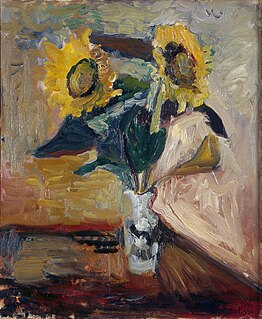 W
WPainterliness is a concept based on German: malerisch ('painterly'), a word popularized by Swiss art historian Heinrich Wölfflin (1864–1945) to help focus, enrich and standardize the terms being used by art historians of his time to characterize works of art.
 W
WPlay drive is a philosophical concept developed by Friedrich Schiller It is a conjoining, through contradiction, of the human experience of the infinite and finite, of freedom and time, of sense and reason, and of life and form.
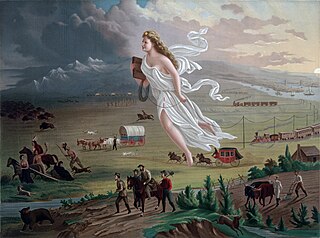 W
WProgress is the movement towards a refined, improved, or otherwise desired state. In the context of progressivism, it refers to the proposition that advancements in technology, science, and social organization have resulted, and by extension will continue to result, in an improved human condition; the latter may happen as a result of direct human action, as in social enterprise or through activism, or as a natural part of sociocultural evolution.
 W
WShibui (渋い) (adjective), shibumi (渋み) (noun), or shibusa (渋さ) (noun) are Japanese words which refer to a particular aesthetic of simple, subtle, and unobtrusive beauty. Like other Japanese aesthetics terms, such as iki and wabi-sabi, shibui can apply to a wide variety of subjects, not just art or fashion.
 W
WSignificant form refers to an aesthetic theory developed by English art critic Clive Bell which specified a set of criteria for what qualified as a work of art. In his 1914 Book Art, Bell postulated that for an object to be deemed a work of art it required potential to provoke aesthetic emotion in its viewer, a quality he termed "significant form." Bell's definition explicitly separated significant form from beauty; in order to possess significant form, an object need not be attractive as long as it elicits an emotional response.
 W
WIn the visual arts, style is a "...distinctive manner which permits the grouping of works into related categories" or "...any distinctive, and therefore recognizable, way in which an act is performed or an artifact made or ought to be performed and made". It refers to the visual appearance of a work of art that relates it to other works by the same artist or one from the same period, training, location, "school", art movement or archaeological culture: "The notion of style has long been the art historian's principal mode of classifying works of art. By style he selects and shapes the history of art".
 W
WIn aesthetics, the sublime is the quality of greatness, whether physical, moral, intellectual, metaphysical, aesthetic, spiritual, or artistic. The term especially refers to a greatness beyond all possibility of calculation, measurement, or imitation.
 W
WThe Theatre of the Absurd is a post–World War II designation for particular plays of absurdist fiction written by a number of primarily European playwrights in the late 1950s. It is also a term for the style of theatre the plays represent. The plays focus largely on ideas of existentialism and express what happens when human existence lacks meaning or purpose and communication breaks down. The structure of the plays is typically a round shape, with the finishing point the same as the starting point. Logical construction and argument give way to irrational and illogical speech and to the ultimate conclusion—silence.
 W
WTsundoku is acquiring reading materials but letting them pile up in one's home without reading them. It is also used to refer to books ready for reading later when they are on a bookshelf.
 W
WThe Übermensch is a concept in the philosophy of Friedrich Nietzsche. In his 1883 book Thus Spoke Zarathustra, Nietzsche has his character Zarathustra posit the Übermensch as a goal for humanity to set for itself. The Übermensch represents a shift from otherworldly Christian values and manifests the grounded human ideal. It is a work of philosophical allegory, with a similar structure to the Gathas of Zoroaster/Zarathustra.
 W
WIn aesthetics, the uncanny valley is a hypothesized relationship between the degree of an object's resemblance to a human being and the emotional response to such an object. The concept suggests that humanoid objects which imperfectly resemble actual human beings provoke uncanny or strangely familiar feelings of eeriness and revulsion in observers. "Valley" denotes a dip in the human observer's affinity for the replica, a relation that otherwise increases with the replica's human likeness.
 W
WIn traditional Japanese aesthetics, wabi-sabi (侘寂) is a world view centered on the acceptance of transience and imperfection. The aesthetic is sometimes described as one of appreciating beauty that is "imperfect, impermanent, and incomplete" in nature. It is a concept derived from the Buddhist teaching of the three marks of existence , specifically impermanence , suffering and emptiness or absence of self-nature .
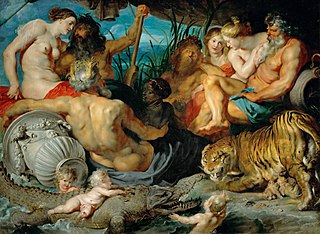 W
WA work of art, artwork, art piece, piece of art or art object is an artistic creation of aesthetic value. Except for "work of art", which may be used of any work regarded as art in its widest sense, including works from literature and music, these terms apply principally to tangible, physical forms of visual art:An example of fine art, such as a painting or sculpture. An object that has been designed specifically for its aesthetic appeal, such as a piece of jewellery. An object that has been designed for aesthetic appeal as well as functional purpose, as in interior design and much folk art. An object created for principally or entirely functional, religious or other non-aesthetic reasons which has come to be appreciated as art. A non-ephemeral photograph, film or visual computer program, such as a video game or computer animation A work of installation art or conceptual art.